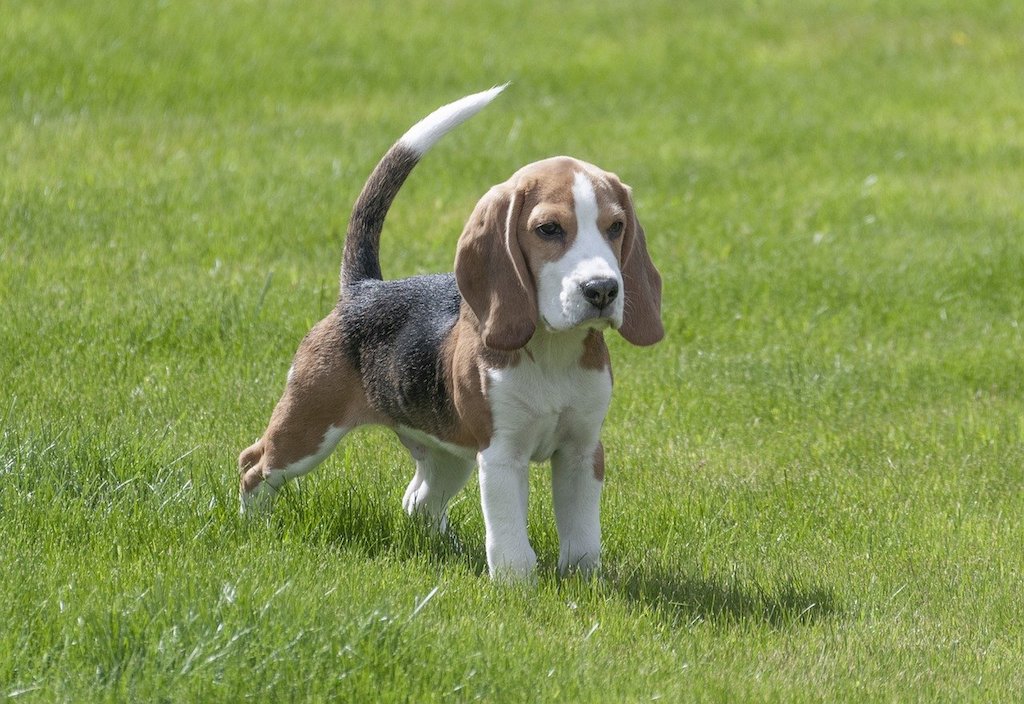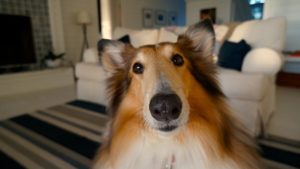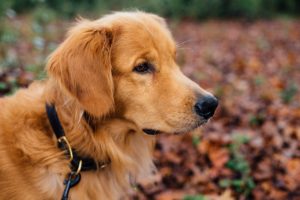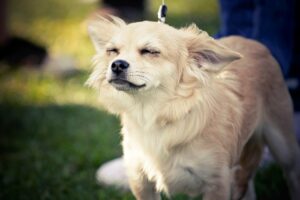Description
With their expressive brown eyes, low-set floppy ears and pointed waggy tail, Beagles really do have one of the most adorable faces of all dog breeds. The skull is slightly domed with a long nose and straight muzzle. Beagles have a sturdy, muscular body with strong athletic legs. Beagles are normally tricoloured – a combination of black, white and tan. Other common colors include lemon and white or red and white. The coat of a Beagle is short and dense.
Beagles are fun-loving, intelligent pack dogs, who adore being part of busy family life. They can become anxious or upset when alone, and prefer the company of other dogs, humans and even cats. They are good with children but can be boisterous when playing. Although they may have a calm demeanor, Beagles need plenty of exercise to prevent boredom and excess energy. A bored Beagle can wreak havoc in a household, from destroying objects to practising their impressive escapology skills!
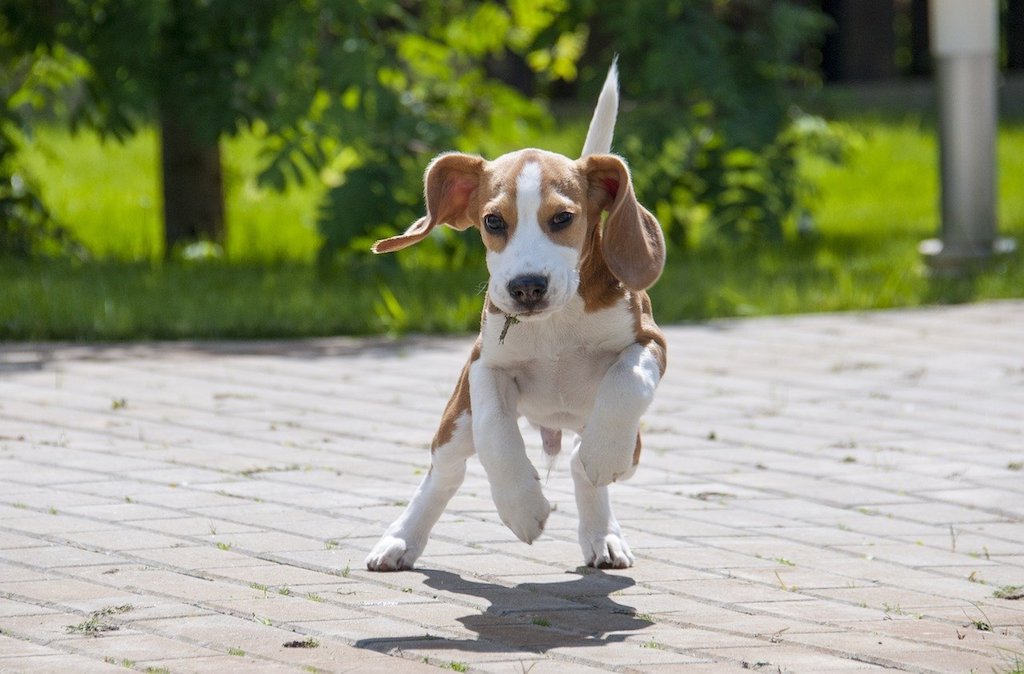
Common health problems
Beagles are healthy dogs with fewer problems than some other pedigree breeds. The breed standard for Beagles is an athletic foxhound body shape, reducing the risk of musculoskeletal disorders. However, as with all pedigree breeds there is some genetic predisposition to certain health problems in Beagles. A responsible Beagle breeder will screen for conditions such as hip dysplasia, hypothyroidism and eye disorders.
Hip Dysplasia
Hip dysplasia is a hereditary condition which causes the hip joints to form improperly, leading to arthritis. It is relatively common in Beagles and if you are purchasing a Beagle puppy you should check with the breeder that the parents have been screened for hip dysplasia. Hip dysplasia is a painful lifelong condition and may require long-term medication or expensive surgical treatment.
Hypothyroidism
Hypothyroidism occurs when the thyroid glands produce insufficient levels of thyroid hormone. Thyroid hormone is one of the primary hormones in regulating metabolism. Dogs with hypothyroidism may be lethargic, prone to obesity and suffer from skin problems. Hypothyroidism is normally quite simple to diagnose with blood tests and the condition can be managed with long-term medication.
Eye Disorders
Beagles can inherit a number of different eye conditions. These can be very painful for your Beagle and may even lead to blindness if left untreated. It is important that your Beagle’s eyes are checked annually by your veterinarian. Seek veterinary advice immediately if your Beagle shows signs of eye pain such as squinting or ocular discharge.
One of the most common eye disorders in Beagles is glaucoma, a very painful condition caused by increased pressure in the eye. They can also suffer from a hereditary condition called Distichiasis, where hairs grow inwards and irritate the sensitive eyeball. Beagles also commonly suffer from blindness caused by cataracts.
Intervertebral Disc Disease
Intervertebral Disc Disease (IDD) is a spinal disease. It occurs when the discs between vertebrae in the spine bulge, causing pressure on nerves. When this occurs the dog will show signs of back or neck pain. He may show difficulty walking or even have complete loss of limb function. It is vital to seek veterinary help immediately if your dog shows any sign of spinal pain or discomfort.
Personality traits
Anyone who owns a Beagle will tell you of their huge sense of fun! These pack animals enjoy nothing more than playing with other dogs and people. They have an active brain and enjoy a lot of mental stimulation. A Beagle owner should be prepared to fulfil these needs with plenty of regular exercise, play sessions and toys. Beagles also respond well to obedience training sessions and can be talented at agility and obstacle courses. However, once their exercise needs have been met the Beagle becomes a loving dog who wants nothing more than a cuddle with their favorite human.
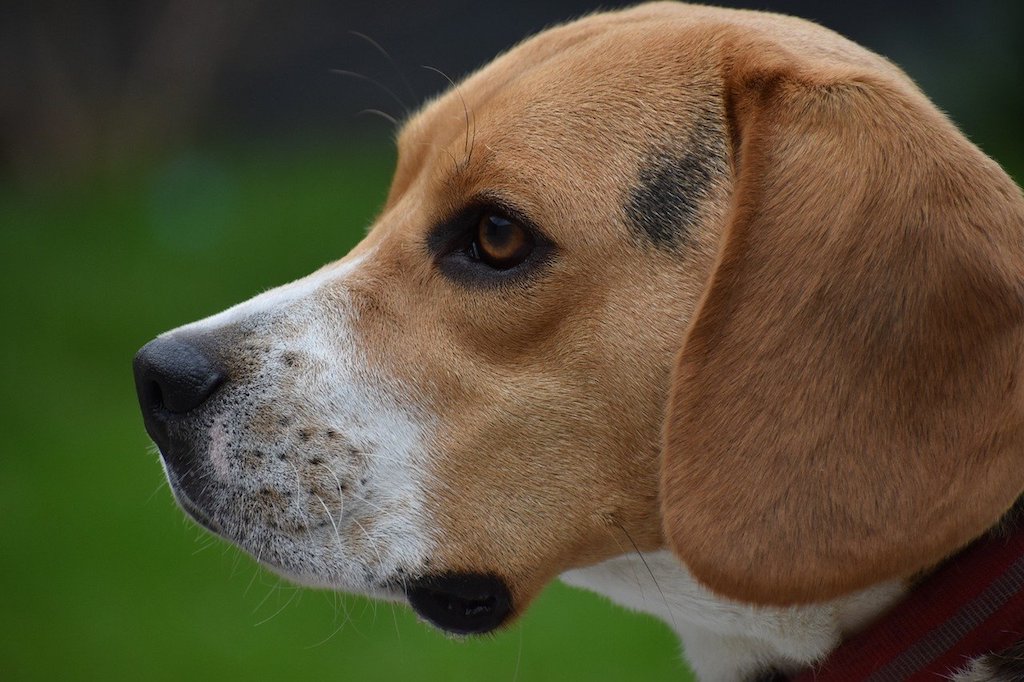
Beagles have adapted well to family life and make great pets. It is worth bearing in mind that they can be boisterous, so take care with them around small children. Beagles also have a tendency to ‘mouth’ during play – grabbing at people with their mouths without causing injury. Although this can be a normal process of learning and playing, it can be alarming, particularly for children.
When choosing a Beagle as a pet it is important to remember that they are traditionally a pack hunting animal. This means it can be difficult to train them to recall off the leash, as once they fix on a scent they cannot be easily distracted. Another trait they have hung onto from their past is the tendency to ‘bay’, which is a prolonged howling noise. Although some Beagles will bay when the are bored, others do it during play or just for fun. This is definitely worth bearing in mind if you prefer a quiet life!
Care
As long as you have the time to meet their exercise needs, Beagles can be easy dogs to care for. They thrive on mental stimulation and human company and can be easy dogs to train.
Grooming
Beagles have a dense double coat; this becomes thicker in the winter and the main shedding season is spring. A weekly groom with a soft brush will be sufficient to remove loose hair and keep the skin healthy. During shedding season a grooming mitt is useful to remove the finer hairs.
As with all dogs, check the ears regularly for signs of infection and keep the nails trimmed to prevent breakages and snagging. Brush the teeth frequently to maintain good dental health.
Training
Obedience training is essential for Beagles. If not trained adequately their inquisitive nature will lead them into all sorts of trouble! During training they respond well to fun and reward-based activities. Beagles do not respond well to harsh training methods, and are easily motivated by food and praise.

It has been noted that Beagles struggle with something called ‘generalization’. This is the ability to recognize a command when it is given in different locations. For example, your Beagle may understand perfectly how to sit on command at home, but in the street the command falls on deaf ears. To combat this problem try varying the location of your training sessions.
Beagles are intelligent dogs and enjoy mental stimulation so training should be lifelong and ongoing, not just basic command training when they are puppies. They learn tricks quickly and will enjoy scent-related challenges such as retrieval and scent discrimination.
Exercise
One thing that Beagles have in abundance is energy! Their daily walk should be at least one hour long and include a combination of walking and running. Walking will help to build and maintain muscle, while running allows your Beagle to release pent-up energy. Beagles also need daily play time and the chance to roam free in an enclosed garden. This helps to give plenty of mental stimulation as well as physical exercise.
Food
Beagles have impressive appetites and absolutely love their food! They do not have any special dietary requirements and will normally thrive on a good quality complete diet. Beagles who live a particularly active lifestyle may require a sport or performance formula. However, this good appetite can frequently lead to obesity so ensure that your Beagle is weighed regularly to monitor for weight gain.
History
The history of the Beagle is a little bit uncertain, but there is no doubt that it is one of the oldest dog breeds. Ancient Greek documents dated 400BC describe a Beagle-type dog used for hunting. It is believed that the Romans may have brought hunting hounds similar to Beagles to England, breeding them with local hounds.

In 16th century England, the gentry often owned packs of hounds. Smaller hounds such as Beagles were kept to hunt small prey such as rabbits. By the mid 1800s Beagles were being taken to America to breed with other dogs, creating a smaller hunting dog.
Throughout history Beagles have been used for hunting. Beagles have an impressive 220 million scent receptors and once they find a trail they will pursue it without distraction. Their dedication to following a scent means they are exceptional sniffer dogs. In modern times Beagles have been trained to sniff out drugs, explosives and even identify dangerous bacteria in human hospitals! Beagles are popular as sniffer dogs at airports and ports. This is because they are not only good at detecting contraband but their waggy tails and friendly faces are not intimidating to the general public.
Interesting facts
- Beagles make excellent sniffer dogs and have a keen sense of smell. It is believed that the Beagle’s long droopy ears may help to trap odours as they put their noses to the ground.
- Beagles are known as a ‘foot hound’, meaning that they can be used for hunting without the need for horseback pursuit. This means they quickly became popular with hunters who were unable to afford to keep a horse.
- The white tip on a Beagle’s tail is a desirable trait in a hunting dog. It acts as a visual aid to keep track of a Beagle on the trail of a scent.
- A Beagle named Elvis was trained to detect pregnancy in polar bears by sniffing their droppings, with a 97% success rate!

